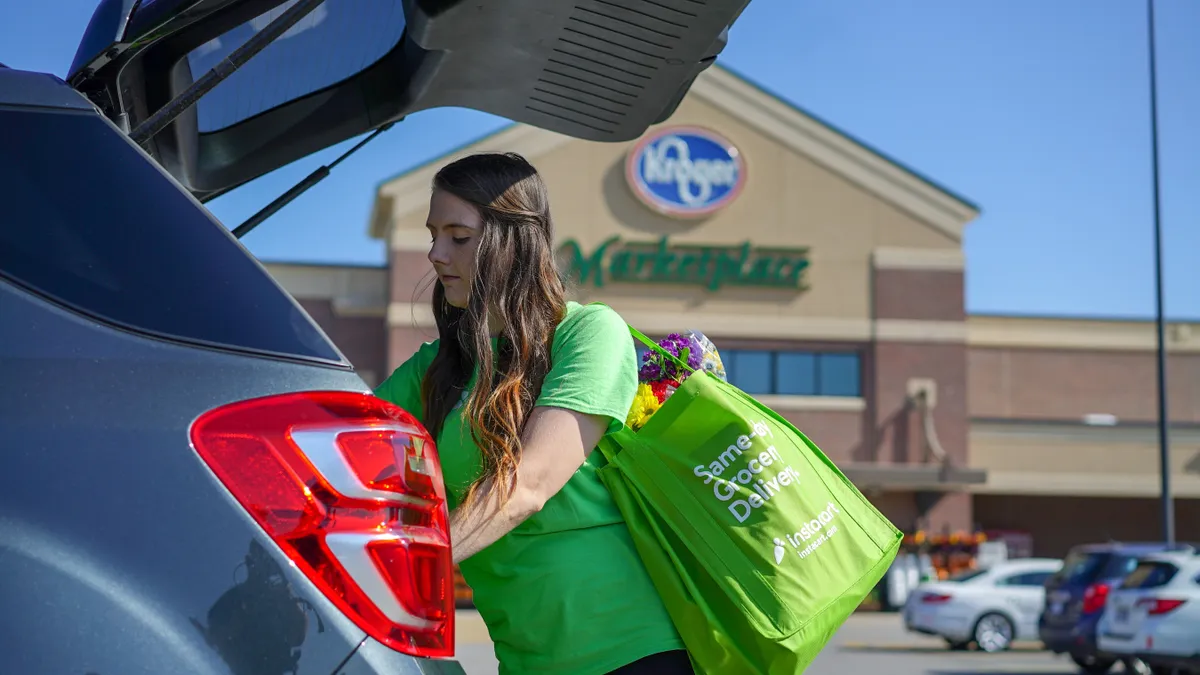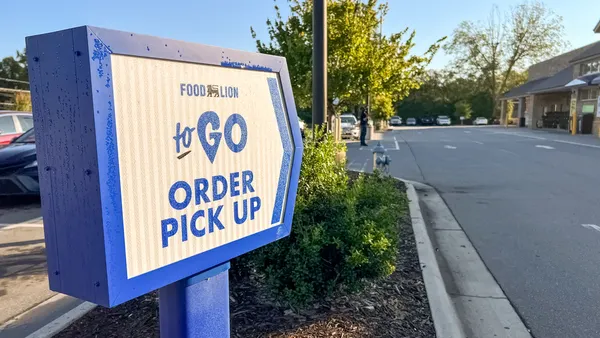Dive Brief:
- Instacart’s share of the online grocery market reached a high of 57% in April, according to a new report from The Information and Second Measure based on purchasing data. While it tapered off a bit in May, Instacart still has more than half the market.
- The growth is particularly notable because it puts Instacart ahead of competitors including Walmart, which saw its market share drop about 25% in March as it struggled to meet surges in demand due to COVID-19. Walmart held as much as 50% of the online grocery market last year, Forbes reported.
- The report suggests one reason for Instacart’s rapid growth is its business model, which taps into many retailers, from local and regional chains to large national retailers including Kroger, Albertsons and Costco.
Dive Insight:
Throughout the COVID-19 pandemic, Instacart has continued to roll out initiatives to improve service, add more labor and retail partners, and speed up delivery times while soaring demand pushed it to its limits.
In May, the company added prescription delivery from Costco, and in April it introduced two new ordering features: “fast and flexible” and “order ahead” to offer faster delivery and make it easier to plan grocery orders. Instacart also made it easy for customers to buy groceries for others during the pandemic, which has boosted business as households helped order for older family members and neighbors. Additionally, Instacart has rapidly hired hundreds of thousands of new contractors to fill and deliver orders.
Walmart, which also hired tens of thousands of workers to support massive demand, struggled throughout the crisis with out-of-stock items, limits on inventory and limited or delayed pickup and delivery time slots. In some cases, Walmart canceled orders when too many items were unavailable.
None of these issues were unique to Walmart, however. Instacart and the retailers it works with have also faced empty shelves, lack of inventory and issues with availability for delivery windows. In some cases, customers were turned away and orders didn’t show up for days.
Though The Information said Walmart lost market share due to its stumbles, the retailer still reported a 74% jump in e-commerce sales in Q2 as more shoppers bought online. Walmart also said the number of new customers trying online grocery grew four times since mid-March. A survey published last month showed Walmart was the top online grocery choice among polled shoppers.
Walmart’s market share loss combined with its spike in grocery e-commerce reiterates just how many more Americans have been buying online overall since COVID-19 broke out. Given the adoption rate, usage could fluctuate among industry leaders like Walmart, Instacart, Amazon, Target and Shipt.
Just six months ago Retail Feedback Group reported low adoption of Instacart with just a quarter of online shoppers using the service. That report showed Walmart had the most online market share at 37%, while Amazon had 29%.














